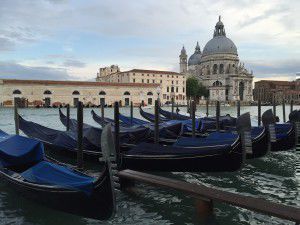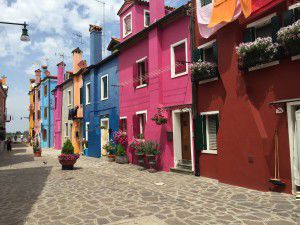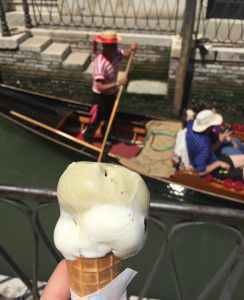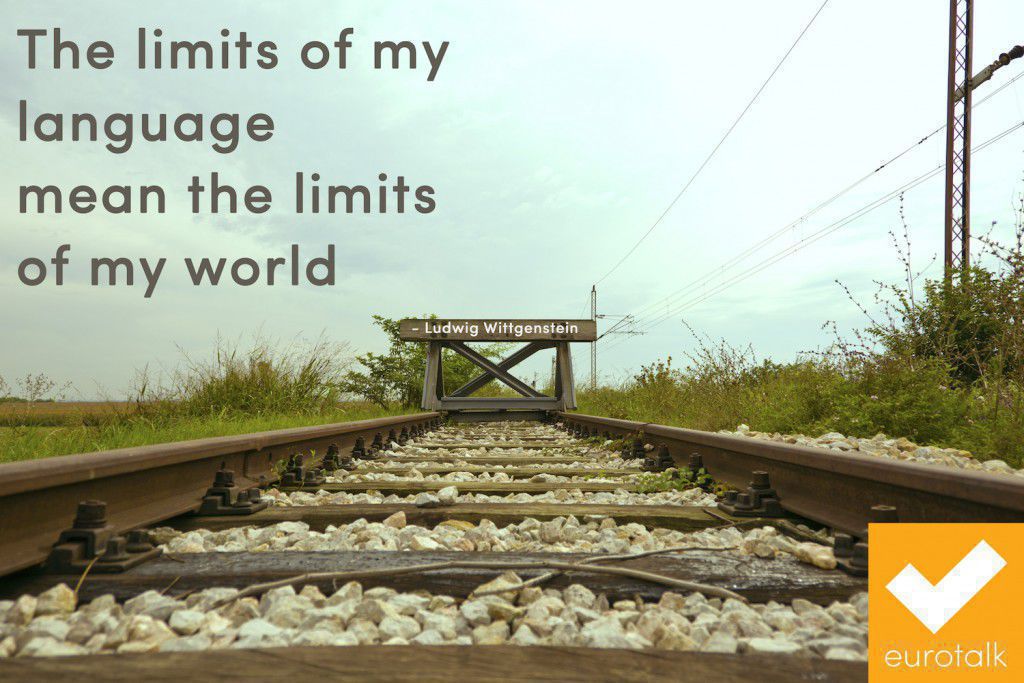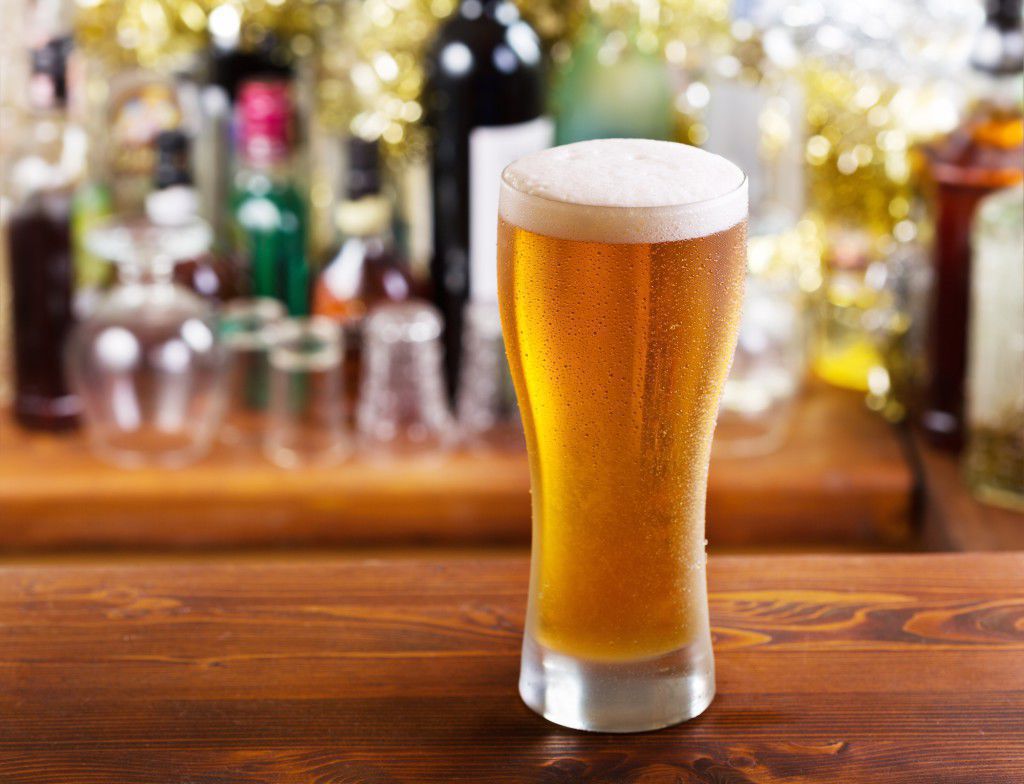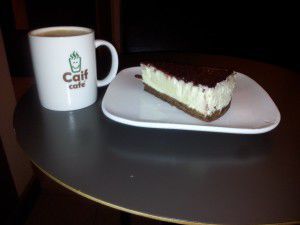What is the world’s weirdest language?
We’ve just found this fun illustration by ESL of the 50 weirdest languages on Earth (and beyond), and it’s got us thinking…
What makes a language ‘weird’? Is there even such a thing as a weird language, or do they just seem strange to us because we don’t know them?
 We’d agree that English is a pretty crazy language, and can only imagine how difficult it must be for a non-native speaker to learn. But does that make it weirder than, say, Mandarin, in which you can say something completely wrong if you get the tone even fractionally out?
We’d agree that English is a pretty crazy language, and can only imagine how difficult it must be for a non-native speaker to learn. But does that make it weirder than, say, Mandarin, in which you can say something completely wrong if you get the tone even fractionally out?
Maybe weird isn’t the right word. Maybe we should be looking for the most interesting language – although that might be a hard one to pin down too, because who decides the criteria?
It’s a bit like trying to say which language is hardest – or easiest – to learn; it’s all a matter of perspective. And since nobody can know all the languages in the world (although we know of a few polyglots who are giving it a good try!), there’s always the chance that another one might come along that’s even stranger to a non-native ear.
What do you think is the world’s weirdest language, and how did you choose? Let us know in the comments!
10 reasons to visit… Venice
We’ve all seen the Italian city of Venice in the movies, but does it live up to its reputation as one of Europe’s most beautiful and historic cities? Amy says yes; here are her ten reasons to check out Venice for yourself.
1. Boats
I think this has to be a very obvious point, as of course Venice and boats go hand in hand. I was rather taken aback by the beauty of the boats, especially the private taxi boats, as they were all immaculate. If you’re landing when it’s still light, get a private taxi from the airport; it is magical and makes you feel like you’re in a James Bond movie cruising along the Grand Canal.
2. Get lost
Once again I think this is quite a popular theme, but honestly just wander about taking little side streets, because you never quite know what you are going to find, maybe a beautiful street, bridge, shop… or possibly a dead end. As long as you have a map with you when you’re ready to head back, you will be absolutely fine. Once you get to grips with the city it is relatively easy to get around and soon you’ll be wandering off to places without even needing any guidance.
3. Churches
The first world that comes to mind when thinking about the different churches in Venice is WOW. There are a vast number of churches across Venice and the ones we went into were simply stunning. We managed to see several, including St Mary of the Friars, where you can see the famous painting Titian’s Assumption of the Virgin, which caused a lot of commotion when it was first revealed. We also saw San Moisè and Santa Maria della Salute, as well as many more. Each church has a different history so you can never get bored of going into different ones.
4. Bridges
There are over 400 bridges in Venice and rather frequently you stumble upon one that’s just beautiful. They vary from concrete to iron; the concrete ones are traditional Venetian bridges, whereas the iron bridges are Austrian.
5. Islands
If you have the time I would definitely recommend hopping across to the different islands. Murano is the closest island, while Burano and Torcello are a little further away but still very easy to get to. We stopped off at Murano, which is famous for its glass, and we were fortunate enough to see the incredibly talented Glass Masters at work. Next was Burano, known for its lace and its colourful houses; this was so the fishermen could spot their house when they were out at sea. Finally we went to Torcello, which is tiny; there are only 15 homes on the island. Sights on Torcello include the Cattedral di Torcella, which was built in AD 1008, and the Santa Foscafe, which is very impressive to look at from the outside.
6. Beauty
I knew Venice would be beautiful, but what I wasn’t expecting was all of the detail that can be seen everywhere, in the churches, the bridges, and even engravings on some streets to represent different districts. Maybe I had rose tinted glasses on, but whenever I thought I had seen something beautiful I rounded a corner and there was something that topped it. It may sound like a cliché but Venice really does take your breath away.
7. Tour
This is an absolute must, because otherwise you can walk past something and have no idea you have passed a major piece of history. The tour means you really get to know Venice and learn about its history and culture, I can’t even begin to describe how much I learnt about the city and how relieved I was that we did a tour. Without it you could be standing in the square where Shakespeare based The Merchant of Venice and have no idea.
8. History
I can honestly say that I had no idea about the extensive history behind Venice, from the several plagues they suffered, to the different Dukes in power and of course Napoleon taking over the city. You definitely get a better feel for the city once you know more about its history, as well as starting to notice different things yourself when walking around, like the different types of bridges I mentioned earlier, or how the Austrians had to have their own cafés as they were not welcome anywhere else. I would read a little about the city before you go, just so you know a little about the Venetians’ background.
9. Food, Drink and Ice Cream
In Italy you expect great pizza and pasta; however Venice is very much based around seafood, although we also discovered an incredible steak restaurant called Vini Da Artur where we had the best steak we have ever eaten. Of course we had pasta and pizza too, but there is really something for everyone. For drinks, I recommend the Hilton Skyline Rooftop Bar for views of Venice and of course Harry’s bar, which originally opened in 1931 and was where the famous Bellini was invented. It is expensive, but just go for one Bellini to say you’ve experienced Harry’s bar, because the atmosphere in there is fantastic. Finally, ice cream was a must for us over the few days we were in Venice, due to it being very hot. There is a different ice cream shop on all of the busy streets, and they do not disappoint. Because you have to have at least one gelato while you’re in Venice, right?
10. St Mark’s Square
We’ve seen it in lots of films and pictures, but you can’t beat going and seeing it for yourself. Stepping into the square, the first thing you notice is how big it actually is. The main attraction – the church – is simply beautiful; the engravings all across the church and the different colours used are stunning. Going inside the church is a must, and you can pay €2 to go to the back of the church. Do it, you’ll see why. All across the square there are intricate engravings in the marble and different statues everywhere. I don’t want to spoil any surprises for anyone wanting to learn the history of the square, you have to go and experience it – and if you’re going with someone special, go at night too as it’s very romantic.
My only warning about Venice is that you do get harassed to buy a selfie stick or to feed the pigeons, so be prepared to say no!
And of course, don’t forget to download uTalk before you leave; even if you don’t have time to learn some Italian in advance, it’s a really useful app to have on your phone when you’re searching for the right word – we used it a lot!
Have you ever been to Venice? What did you think?
Amy
Quote of the week: 27 Jun 2015
“The limits of my language mean the limits of my world.” Ludwig Wittgenstein
The language of beer
‘Two beers, please’ is perhaps one of the most useful phrases you can learn at the start of your language-learning journey (and, incidentally, one of the first items you learn with uTalk Essentials). You’ve made it to the country, you’ve struggled with buses from the airport and fought with taxi drivers over the fare. Now you’ve dumped your luggage and definitely deserve a nice, cool, refreshing beer, so into the pub you go.
There’s just one problem.
If you go into a pub in the UK and ask for a beer, there will be a follow-up question: Is that ale or lager?
The correct answer, by the way, is always ale. Ale, ale, ale, especially if you want to discover a little bit of Northern European culture. We do have lagers here too, of course, but ale is the more traditional drink, available in an enormous range of tastes and colours, served in short, squat pints (or tankards, if you’re lucky), as opposed to the tall spindly glasses that lager generally comes in.
But what is the difference, and why do you need to know about it?
Well, they’re two very different drinks. Very different! Lager is fizzy, cold and has a light flavour, whereas ale is flat and heavy (in fact, in Aberdeenshire, instead of ordering a pint of ale you order a pint of ‘heavy’) and definitely not as cold as lager. Ale drinkers rarely switch to lager and vice versa.
Why choose ale?
The great thing about ale is that there are thousands and thousands of different types, and any good pub will have at least four different ones on tap at any time (if they have fewer than that, just walk out and go somewhere else). You can usually ask to try one before committing to a full pint, as tastes can vary rather wildly in ale, from super-hoppy bitter numbers (again, ‘a pint of bitter’ will get you a pint of ale, if you want to experiment with English colloquialisms), to sweet, chocolatey types and light, refreshing ‘session’ ales. Depending on the region (and Kent, Norfolk and Cornwall are but three UK regions with a strong ale tradition), you might start to spot certain recognisable tendencies, or again you might find a brewery you like and be forever wedded to their creations. For me, anything by Skinners or Sharp’s wins hands-down over anything else on offer.
Still confused? We found this handy infographic by popchartlab that breaks it all down…
Got any thoughts on the different types of beer available in different countries? Do you have a preference for ale or lager? Let us know!
Nat
A trip to Riga
At the risk of sounding like a Eurovision host… greetings from Latvia!
I don’t have the sparkly outfit or the slightly dodgy English accent (although some may disagree with that), nor am I looking for my five minutes of fame. So perhaps less Eurovision host, more lazy wanderer.
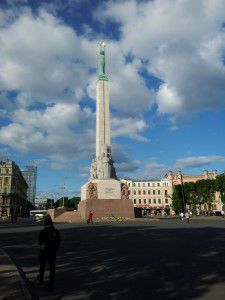 I find myself in the beautiful city of Riga for a few weeks, and after only a few days, I can say it is a good choice with lots to explore.
I find myself in the beautiful city of Riga for a few weeks, and after only a few days, I can say it is a good choice with lots to explore.
Riga has become a ‘must see’ for many a traveller, a mid-point on the popular route between Tallinn and Vilnius.
The time difference is +2 GMT and it’s a little surprising to find the sun rising at 3 in the morning when the evenings draw in much the same time as they do in the UK.
The temperature is actually like the best bits of the UK summer and sometimes hotter, but that can be significantly reduced by the wind.
The currency is the euro, the prices are relatively cheap, the local supermarket is Rimi.
Everything is pretty central and the airport is accessible by little more than half an hour by bus for around 2 euros.
So, that’s the stats and stuff.
So what’s Riga really like?
Well, if you’ve been to Budapest, it’s quite similar. A lot of the cities over this way are like that: where communism still flavours the architecture yet the need for growth and change is evident in the modern buildings that have sprung up amongst them.
The main thing you’ll realise about Riga on arrival is the parks. Everywhere you look there are beautiful parks, with statues, floral sculptures, sailing boats, cafes, and sometimes a ‘summer stage’ where I’m told there are free performances. If you’re a park-bencher – book, beer, cake, coffee – this place is beyond perfect. You could probably do a full tour of all the benches and be here for months!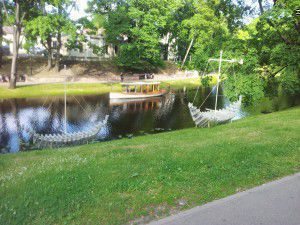
It’s a ‘shoes off’ culture so be prepared to bare feet the moment you arrive in a hostel or home. Also be prepared for the supermarkets to stop selling alcohol around 7:30. Stock up, early!
The traffic lights can be very quick changing so do not dawdle. You’ll be alerted by a series of beeps. When the beeper beeps, get going!
There is a great central market and if you go inside there are a lot of stalls selling local fare. Prepare to put on weight. It is pastry-central here. I haven’t tried savoury Latvian food yet, but that day will come.
Whilst English is not spoken everywhere, the locals are used to the poorly multi-tongued English speaker, and are patient and on the whole very kind.
It’s too soon to tell but I imagine a week would be an adequate length of time to see everything there is to see of Riga. But, since I’ll be here for a while yet, perhaps I can provide a little more detail on that in the near future.
But until then, and until I sample the local beer… Priekā! (cheers)
Kelly

